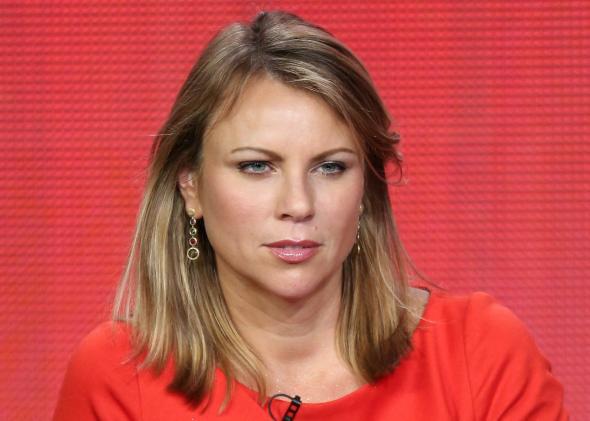Last night, New York magazine published a long investigation into Lara Logan’s journalism career, from her tabloid-baiting beginnings as a pretty young foreign correspondent, through her star-making CBS coverage of the Iraq War, her highly-publicized assault in Tahrir Square, and finally the erroneous 60 Minutes Benghazi report that sidelined her once-sparkling future. The title of Joe Hagan’s piece—“Benghazi and the Bombshell”—is a provocative double entendre. This is the story of a very beautiful woman who pushed for a very bad scoop. (In the now-infamous segment, Logan gave an uncontested platform to a pseudonymous defense contractor whose wall-hopping, AK-47–wielding account of the 2012 attack on the U.S. diplomatic mission in Libya was later revealed to be a fabrication.) It’s easy for stories like this—ones that attempt to recognize the female sexuality of their subjects in the context of their professional careers—to stumble into rank sexism or else wither in deference to political correctness. But Hagan’s story addresses Logan’s sex appeal head on, reporting out all of the angles on how her looks have worked to both bolster and undermine her career.
In Hagan’s account, Lara Logan is a dogged reporter who will stop at nothing to get a story. She’s hired Iraqi fixers to smuggle her across borders and defied producers’ orders to stay in the safety of her hotels. She is not the type to let any weapon in her reportorial arsenal go unused, so she also masterfully parlayed her looks—and the public perception of them—to succeed. “This would be a theme in Logan’s career, how her beauty cut several ways,” Hagan writes. British papers—which dubbed Logan “34D Lara” and once headlined a story about a report of Logan appearing in Afghanistan with visible cleavage, “Put Those Bazookas Away, Lara”—earned Logan’s condemnation. But according to unnamed friends, Logan also kept the paparazzi in her pocket and “once tipped off a photographer about her lingerie on a laundry line so he could take a picture.” When Logan again made tabloid news after her CNN correspondent boyfriend discovered her in bed with a government contractor while on assignment in Iraq, she leveraged the embarrassing flap to pull rank at CBS. Logan fired the security contractors who had been long hired by CBS to protect its employees—in this case, for failing to protect her from her spurned lover—and compelled the network to switch to a rival company above other CBS employees’ protestations.
In Hagan’s hands, these anecdotes coalesce into a fascinating account of how female foreign correspondents are forced to fight on several fronts. If Logan capitalized on her sexuality to make headway in her career, it was because she was not content to sit back and watch others pick apart her body while she failed to benefit from the attention. “Men who did what Logan did in the war zone were hailed for bravery and virtuous machismo, while Logan was critiqued for the same thing,” Hagan writes. “She deployed her beauty to charm and persuade colleagues and sources to great effect—but the effectiveness didn’t prevent co-workers and competitors from calling her a lightweight.” This dynamic came to a head when Logan was assaulted in Tahrir Square during the 2011 Arab Spring uprising. Hagan rightly recognizes the uncomfortable fact that the assault “earned Logan enormous goodwill from CBS colleagues, even ones who’d previously been critical.” She emerged from the incident “more respected than ever,” but also more protected. After a two-month leave, her producer sidelined her from the action, assigning her “soft stories, profiles of Aerosmith and Michael Bublé” that made Logan “restless” at the network. Her 2012 Benghazi report was to be her big return to the hard-hitting stuff.
The profile is mostly a subtle, complicated account. So it’s unfortunate that one of the most central events in Logan’s trajectory—the 2011 assault in Tahrir Square—does not benefit from Hagan’s otherwise exhaustive reporting. Hagan dispenses with the incident in a brief four paragraphs, and his multifaceted approach to the gender dynamics at play in Logan’s career are oddly flattened here. “It was the kind of story Logan lived for, charged with danger and historic import,” Hagan writes about Logan’s eagerness to cover the events in Cairo. “But now she was a mother, and the chaos in Egypt created a dangerous and fluid situation for journalists.” Where is the concern over Logan’s motherhood coming from? Not from Logan herself, who was eager to get the story. If Hagan spoke to sources at CBS who felt that Logan’s status as a mother disqualified her from the job, or made it more difficult for network brass to send her to Egypt, he doesn’t cite them.
The assault against Logan also gives Hagan the opportunity to examine how some commentators blamed her for making herself vulnerable to attack, a criticism that didn’t fall on peers like Anderson Cooper who were pushed around while covering the uprising. Instead, Hagan subtly takes their side, citing an anonymous source who tells him: “She was told 15 different ways: ‘Do not leave the hotel after curfew,’ and she did.” Hagan presents one paragraph detailing Logan’s account of her sexual assault and rescue by members of the crowd, peppering it with phrases like “she would later recount” and “she said,” which are typically innocuous but in this context seem meant to remind the reader that this is Logan’s version of events, not simply the facts of what happened. Hagan may be trying to subtly nod to the fact that some other journalists and witnesses on the ground that night have contested Logan’s retelling of events, but if Hagan has any doubt as to Logan’s story, he should report it out, just like he did so doggedly for the rest of the piece. As it is now, the hints just hang there, grossly.
